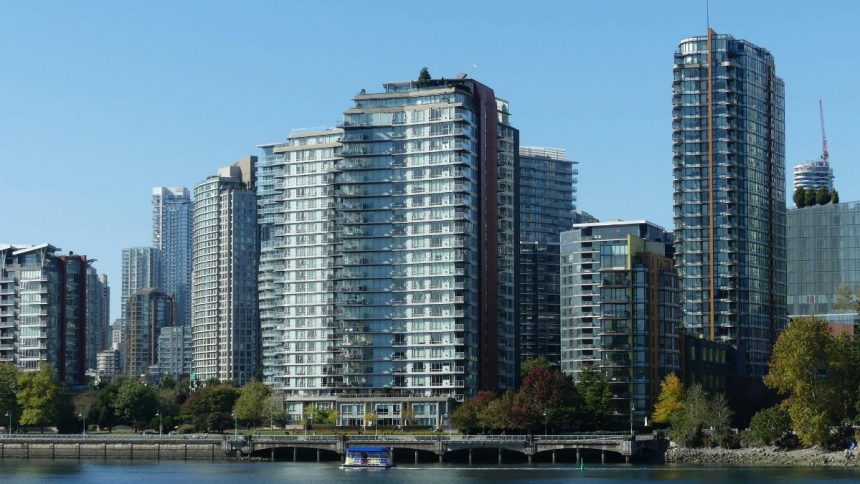Buying your first condominium in Singapore represents a significant milestone in your financial journey. The decision involves not just choosing a property but making a long-term commitment that will affect your lifestyle, finances, and future wealth for decades. Modern residential options such as Narra Residences exemplify the type of quality developments available to first-time buyers today, but understanding what to evaluate helps you make informed choices that serve your actual needs rather than just responding to marketing appeals.
This guide walks you through critical factors you should consider when evaluating condominiums, helping you avoid common first-time buyer mistakes while positioning yourself for long-term satisfaction.
Understanding Your True Budget Beyond Purchase Price
When you calculate how much condominium you can afford, you need to look far beyond the sticker price. Many first-time buyers focus exclusively on whether they qualify for the mortgage, but true affordability encompasses multiple ongoing costs that significantly impact your monthly cash flow.
Your purchase price determines your down payment and monthly mortgage payments, but these represent only part of your financial commitment. Monthly maintenance fees typically range from $200 to $500 depending on unit size and development facilities. Unlike mortgage payments that eventually end, maintenance fees continue indefinitely and typically increase 3-5% annually.
Property tax represents another ongoing cost you must budget for. Singapore’s property tax uses progressive rates based on annual value, with owner-occupied properties taxed more favorably than investment properties. While property tax may seem modest initially, it increases as your property appreciates.
Insurance costs vary based on coverage levels but typically run several hundred dollars annually. Fire insurance is mandatory for properties with mortgages, and you should consider additional coverage for contents and liability protection.
Renovation and furnishing costs often catch first-time buyers by surprise. Even if you purchase a unit with developer finishes, you’ll likely want to personalize spaces. Budget $30,000-$80,000 for quality renovations and furnishing, depending on unit size and your standards.
Location Strategy That Matches Your Lifestyle
Location determines your daily quality of life more than any other factor, yet many first-time buyers make location decisions based on resale value speculation rather than their actual lifestyle needs. You should start by honestly assessing how you live and what matters most to your daily routine.
Commuting time to work significantly affects your daily stress and time availability. If you work in the CBD, evaluate actual door-to-door commute times during peak hours, including walking to stations, waiting for trains, and any transfers. A property 20 minutes farther from the office but near an efficient MRT line might offer shorter actual commutes than something theoretically closer requiring bus connections.
Proximity to family and friends matters more than many buyers initially recognize. If your parents provide childcare or if you regularly gather with extended family, choosing a location that facilitates these connections enhances your quality of life.
Amenity access should align with how you actually spend time rather than aspirational activities you rarely pursue. If you shop at specific supermarkets, eat at particular restaurants, or use certain recreational facilities regularly, having these nearby adds genuine daily value.
School considerations matter if you have or plan to have children. Research school placement priorities, understand distance eligibility requirements, and evaluate actual school quality through multiple sources beyond just rankings.
Evaluating Developer Reputation and Track Record
The developer building your condominium significantly impacts your satisfaction long after you move in. Established developers with strong track records build quality into projects, honor commitments, and deliver as promised. You should research potential developers thoroughly before committing.
Past project quality provides the best indicator of what you can expect. Visit completed developments by developers you’re considering, speak with residents if possible, and evaluate build quality, common area upkeep, and whether developers addressed defects promptly during warranty periods.
Financial stability matters because development is a multi-year process. Developers facing financial difficulties may cut corners, delay completion, or struggle to deliver promised facilities. Research developer financial health through publicly available information and their history of completing projects on schedule.
After-sales service differentiates good developers from mediocre ones. Quality developers maintain responsive service centers that address defects promptly during the warranty period. Poor developers make defect rectification difficult, creating unnecessary stress.
Assessing Unit Layout and Orientation
Unit layout and orientation dramatically affect your daily living experience, yet these factors can be difficult to evaluate during showflat visits that use furniture staging to optimize perception. You need to look beyond surface-level impressions to assess practical functionality.
Natural light and ventilation depend heavily on unit orientation. North-south facing units typically receive less intense direct sunlight, resulting in cooler interiors that require less air conditioning. East-facing units receive morning sun while west-facing units endure intense afternoon heat.
Room proportions matter more than total square footage. A unit might boast impressive size but feature awkward room shapes that make furniture arrangement difficult or result in wasted space. Bring room measurements and your existing furniture dimensions to determine whether your belongings will actually fit comfortably.
Kitchen functionality often gets overlooked in favor of aesthetic appeal. Evaluate counter space for meal preparation, cabinet storage capacity, appliance placement efficiency, and whether the layout suits how you actually cook.
Bathroom configurations should match your needs. Families with children benefit from bathtubs, while couples might prefer double sinks and separate shower enclosures. Storage for toiletries, towels, and cleaning supplies often gets inadequate attention during initial evaluations.
Balcony or outdoor space usefulness depends on size, orientation, and your lifestyle. A small balcony facing a wall provides little value. Larger balconies with pleasant views and good sun exposure become genuine extensions of living space you’ll use regularly.
Understanding Facilities Versus Maintenance Costs
Impressive facility lists appeal to first-time buyers but often represent liabilities rather than assets. You should evaluate facilities based on what you’ll actually use regularly, not what sounds impressive in marketing brochures.
Extensive facilities drive up maintenance fees permanently. Those Olympic-sized pools, elaborate gyms, and entertainment decks cost substantial amounts to maintain. You’ll pay for these facilities through monthly maintenance fees regardless of whether you use them.
Facility usage reality often disappoints after initial excitement wears off. That rock-climbing wall you imagined using weekly might see monthly visits at best. Honest self-assessment of your actual lifestyle prevents paying for facilities you won’t genuinely enjoy.
Crowding in popular facilities reduces their practical value. In developments with hundreds of units, prime-time gym access requires arriving early to secure equipment. Swimming pools get crowded during weekends. BBQ pits and function rooms require booking weeks in advance.
Evaluating Future Development and Infrastructure
Your property’s future value and livability depend significantly on surrounding development and infrastructure projects that you can research before purchasing. Understanding what’s coming helps you make informed decisions.
Planned MRT lines and stations can dramatically affect property values and daily convenience. Research confirmed infrastructure projects, their construction timelines, and exact station locations. Properties near future MRT stations typically appreciate as completion approaches.
Nearby development plans reveal what will surround your property. Check URA master plans and approved development applications to understand whether nearby plots will become residential developments, commercial buildings, or industrial facilities.
Construction periods for nearby projects affect your quality of life. Multiple simultaneous major projects can mean years of construction noise, dust, and traffic disruption. While temporary, these impacts affect your daily comfort during occupancy.
Making Your Decision With Confidence
You’ve evaluated finances, location, developer quality, unit characteristics, facilities, and future developments. Now you need to synthesize this information into a confident decision that serves your long-term interests.
Visit shortlisted properties multiple times at different hours and days. Morning visits reveal noise levels as residents leave for work. Evening visits show parking congestion and facility crowding. Weekend visits demonstrate how common areas function during peak usage. These varied visits provide realistic pictures beyond staged showflat experiences.
Speak with current residents whenever possible. They provide unfiltered perspectives on management responsiveness, facility maintenance quality, community atmosphere, and whether the development delivers on marketing promises.
Engage professionals for objective advice. Mortgage brokers help you understand financing options and true affordability. Property agents familiar with specific areas provide market insights and negotiation guidance.
Trust your instincts after thorough research. If something feels wrong despite positive indicators, investigate further or consider alternatives. Your intuition combined with solid research typically points toward appropriate decisions.
Your Path to Successful Homeownership
Buying your first condominium requires balancing practical considerations with financial realities and personal preferences. By systematically evaluating each factor outlined—budget comprehensiveness, location suitability, developer credibility, unit functionality, facility value, and future developments—you position yourself to make informed decisions that serve you well for years.
Remember that perfect properties don’t exist. Every option involves trade-offs between competing priorities. Your goal isn’t finding the perfect property but identifying the option that best serves your specific circumstances. With thorough evaluation and honest self-assessment, you can choose confidently and begin building wealth through Singapore’s property market while enjoying a home that genuinely enhances your quality of life.
Lynn Martelli is an editor at Readability. She received her MFA in Creative Writing from Antioch University and has worked as an editor for over 10 years. Lynn has edited a wide variety of books, including fiction, non-fiction, memoirs, and more. In her free time, Lynn enjoys reading, writing, and spending time with her family and friends.















